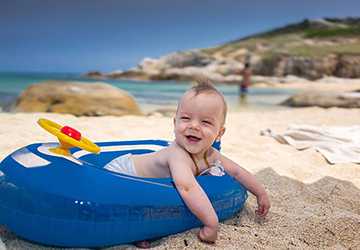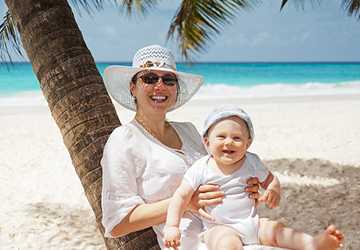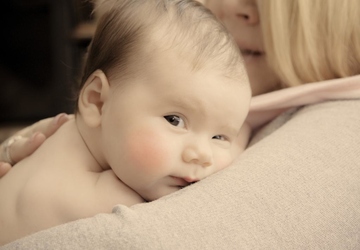Top 10 Infant Reflexes and What They Mean
Welcoming a newborn into the world is a joyous occasion filled with countless moments of wonder and discovery. As parents, guardians, or caregivers, understanding your infant's behaviour and development is crucial to ensure their well-being and happiness. One fascinating aspect of a newborn's early development is the presence of reflexes. These automatic, instinctual responses play a vital role in an infant's initial stages of life. In this article, we will explore the top 10 infant reflexes and their meanings, shedding light on how they help infants adapt to the world around them.

1.Rooting Reflex
The Rooting Reflex, one of the earliest and most crucial infant reflexes, is a remarkable instinct that helps newborns find nourishment. When the cheek or mouth's corner is gently stroked, the baby instinctively turns their head and opens their mouth, searching for a source of food. This reflex plays a fundamental role in promoting successful breastfeeding or bottle-feeding, as it ensures that the infant can effectively locate and latch onto the mother's breast or a feeding bottle. Understanding the Rooting Reflex is essential for caregivers., as it aids in fulfilling the baby's nutritional needs and fostering healthy development.
2.Moro Reflex
Also known as the startle reflex, the Moro reflex is a response to sudden changes in an infant's position or loud noises. When an infant experiences a startling sensation, they instinctively throw their arms outwards, extend their legs, and arch their back. This reflex is thought to be a primitive survival mechanism that helps infants cling to their caregivers, seeking protection and comfort.
3.Grasp Reflex
The Moro reflex, often called the startle reflex, is a compelling innate response in newborns. This reflex is triggered by sudden changes in an infant's position or unexpected loud noises. When startled, the baby will dramatically extend their arms, spread their fingers, arch their back, and sometimes even cry. The Moro reflex is believed to be a primitive survival mechanism, helping infants cling to their caregivers in search of protection and comfort during moments of surprise, creating an immediate and instinctual connection between the child and their caregiver.
4.Babinski Reflex
The Babinski Reflex is a peculiar but vital response seen in newborns. When the sole of a baby's foot is gently stroked, their toes fan out, and the big toe moves upward. This reflex, first described by neurologist Joseph Babinski, indicates neurological development in infants. While it may seem perplexing, the Babinski Reflex provides valuable insights into the maturation of the nervous system. It is a standard part of pediatric assessments, helping medical professionals monitor an infant's neurological progress and well-being.
5.Palmar Grasp Reflex
The Palmar Grasp Reflex, a captivating early response in newborns, involves the baby's hand. When a finger or an object is placed in the infant's palm, they instinctively curl their fingers around it, creating a surprisingly firm grip. This reflex is a precursor to developing fine motor skills and is crucial for early interactions, such as holding onto their caregiver's finger or grasping objects within their reach. As the infant's hand muscles gradually strengthen and their nervous system matures, this reflex will pave the way for more intricate hand movements.

6.Tonic Neck Reflex
The Tonic Neck Reflex, also known as the "fencing posture," is a captivating response displayed by infants when their head is turned to one side. When the baby's head faces in one direction, they instinctively extend the arm on that side while flexing the opposite arm. This reflex aids in developing hand-eye coordination and lays the foundation for more intricate motor skills. It showcases the early stages of a baby's ability to adapt and interact with their surroundings, representing a pivotal step in their motor development journey.
7.Stepping Reflex
The stepping reflex is a captivating response in newborns when they are held upright with their feet touching a solid surface. This reflex triggers a surprising yet endearing sight – the baby appears to take tiny steps despite being far from walking independently. This instinctual response isn't just adorable; it also serves a crucial purpose. The stepping reflex plays a pivotal role in strengthening the baby's leg muscles and promoting early coordination, laying the groundwork for the complex skill of walking that will develop in the months to come.
8.Sucking Reflex
The sucking reflex, a fundamental instinct in newborns, plays a pivotal role in their early survival and nourishment. When an object or nipple is introduced into the baby's mouth, they exhibit an innate response, initiating rhythmic sucking motions. This reflex ensures infants can effectively nurse or bottle-feed, obtaining the essential nutrients they need to thrive. It's not only a means of sustenance but also a source of comfort, as babies often find solace in the soothing act of sucking, making it a crucial element of early bonding and well-being.
9.Palmar-Mental Reflex
The Palmar-Mental Reflex, often overshadowed by more well-known infant responses, is an intriguing reaction that emerges when the palm of a baby's hand is stimulated. In this unique reflex, infants will respond by opening their mouths, protruding their tongues, or sometimes even displaying facial grimaces. This seemingly subtle reflex, often linked to the development of facial muscles and oral motor skills, is pivotal in an infant's journey toward mastering various facial expressions and facilitating communication, making it a fascinating aspect of early human development.
10.Asymmetrical Tonic Neck Reflex (ATNR)
The Asymmetrical Tonic Neck Reflex (ATNR) is a captivating response exhibited by infants when their head is turned to one side. When this occurs, the baby instinctively extends the arm on the side to which the head is facing while bending the opposite arm. This intriguing reflex is believed to be closely associated with the development of hand-eye coordination. It serves as a precursor to more complex motor skills, including crawling. ATNR, in its unique way, sets the stage for an infant's transition from instinctual responses to intentional movements and explorations of their surroundings.
Conclusion
The world of newborns is filled with remarkable discoveries, and understanding infant reflexes is a vital part of this journey. These instinctual responses, such as the rooting reflex for feeding, the Moro reflex for seeking protection, and the palmar grasp reflex for early motor development, play essential roles in an infant's growth and environmental adaptation. As parents, caregivers, or guardians, recognizing these reflexes and their meanings can help you better understand your baby's needs and developmental progress. While many of these reflexes fade as a child grows, their significance in the early stages of life is undeniable.
reflexes fade as a child grows, their significance in the early stages of life is undeniable.





